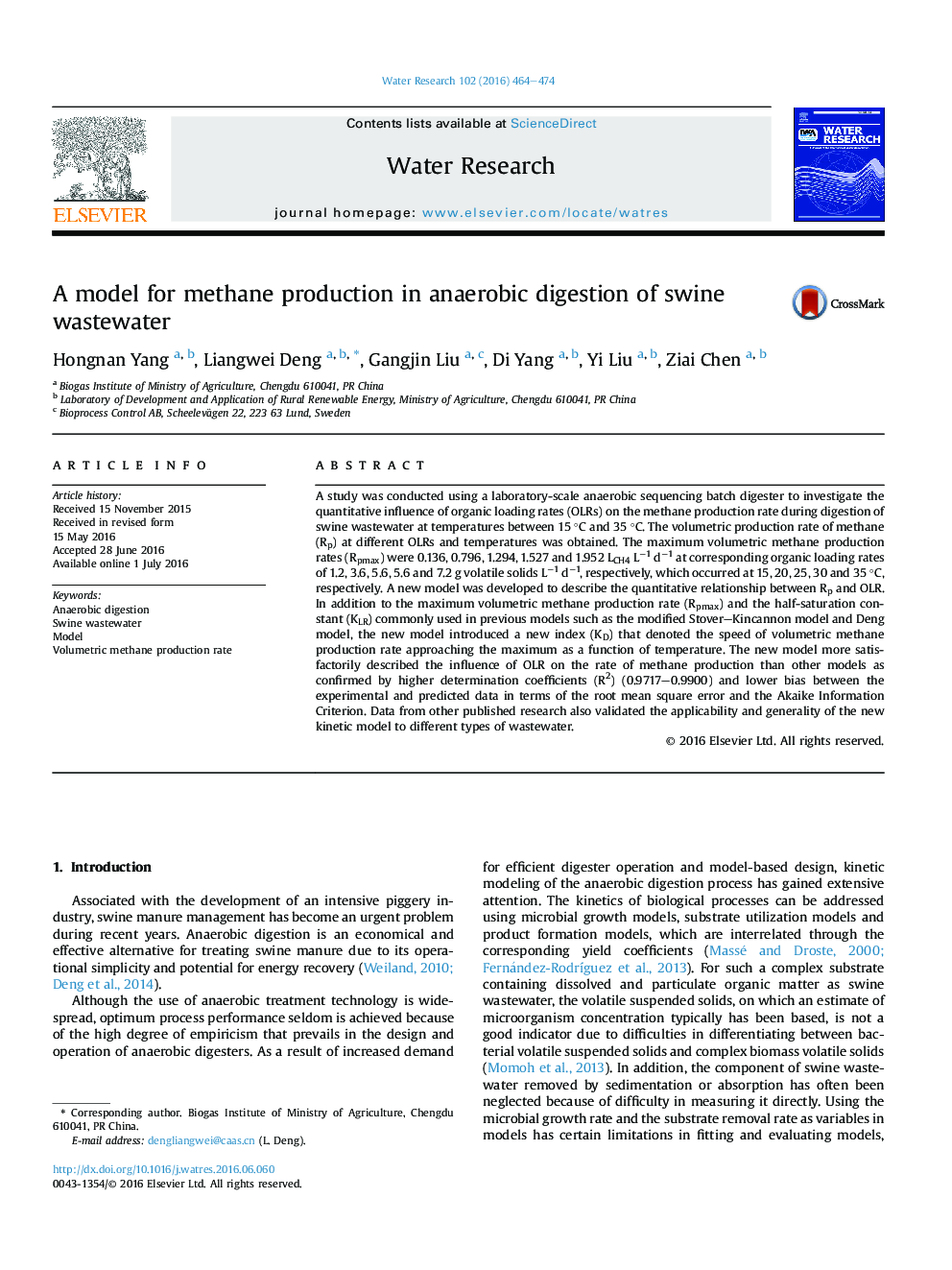| کد مقاله | کد نشریه | سال انتشار | مقاله انگلیسی | نسخه تمام متن |
|---|---|---|---|---|
| 4480877 | 1623066 | 2016 | 11 صفحه PDF | دانلود رایگان |
• Biogas fermentation of swine wastewater was studied at 15–35 °C in interval of 5 °C.
• A new model to describe methane production was developed.
• The influence of temperature on kinetic constants of new model was evaluated.
• The precision of new model was high than previous one.
• The generality of new model were validated by previous experimental data.
A study was conducted using a laboratory-scale anaerobic sequencing batch digester to investigate the quantitative influence of organic loading rates (OLRs) on the methane production rate during digestion of swine wastewater at temperatures between 15 °C and 35 °C. The volumetric production rate of methane (Rp) at different OLRs and temperatures was obtained. The maximum volumetric methane production rates (Rpmax) were 0.136, 0.796, 1.294, 1.527 and 1.952 LCH4 L−1 d−1 at corresponding organic loading rates of 1.2, 3.6, 5.6, 5.6 and 7.2 g volatile solids L−1 d−1, respectively, which occurred at 15, 20, 25, 30 and 35 °C, respectively. A new model was developed to describe the quantitative relationship between Rp and OLR. In addition to the maximum volumetric methane production rate (Rpmax) and the half-saturation constant (KLR) commonly used in previous models such as the modified Stover–Kincannon model and Deng model, the new model introduced a new index (KD) that denoted the speed of volumetric methane production rate approaching the maximum as a function of temperature. The new model more satisfactorily described the influence of OLR on the rate of methane production than other models as confirmed by higher determination coefficients (R2) (0.9717–0.9900) and lower bias between the experimental and predicted data in terms of the root mean square error and the Akaike Information Criterion. Data from other published research also validated the applicability and generality of the new kinetic model to different types of wastewater.
Figure optionsDownload high-quality image (167 K)Download as PowerPoint slide
Journal: Water Research - Volume 102, 1 October 2016, Pages 464–474
